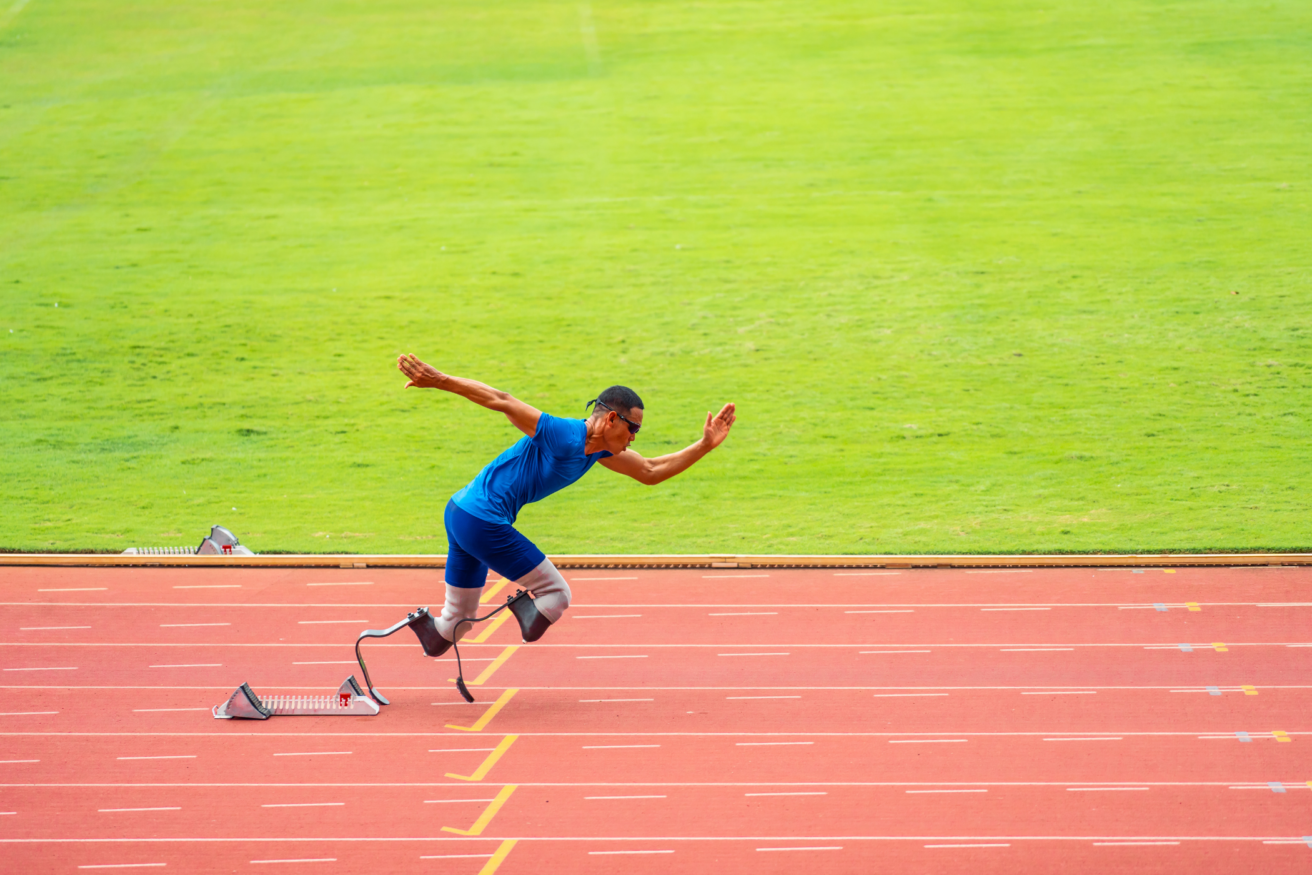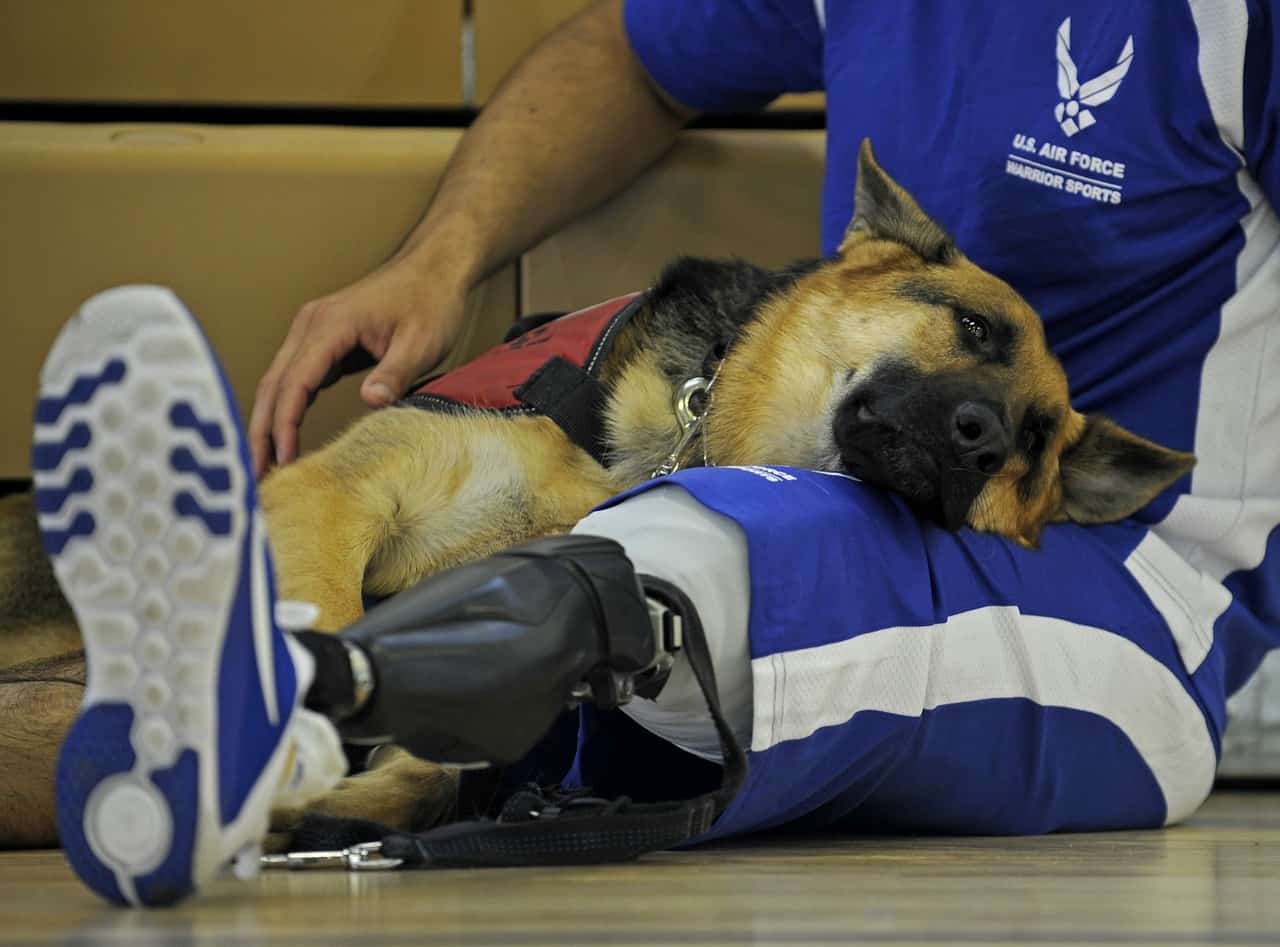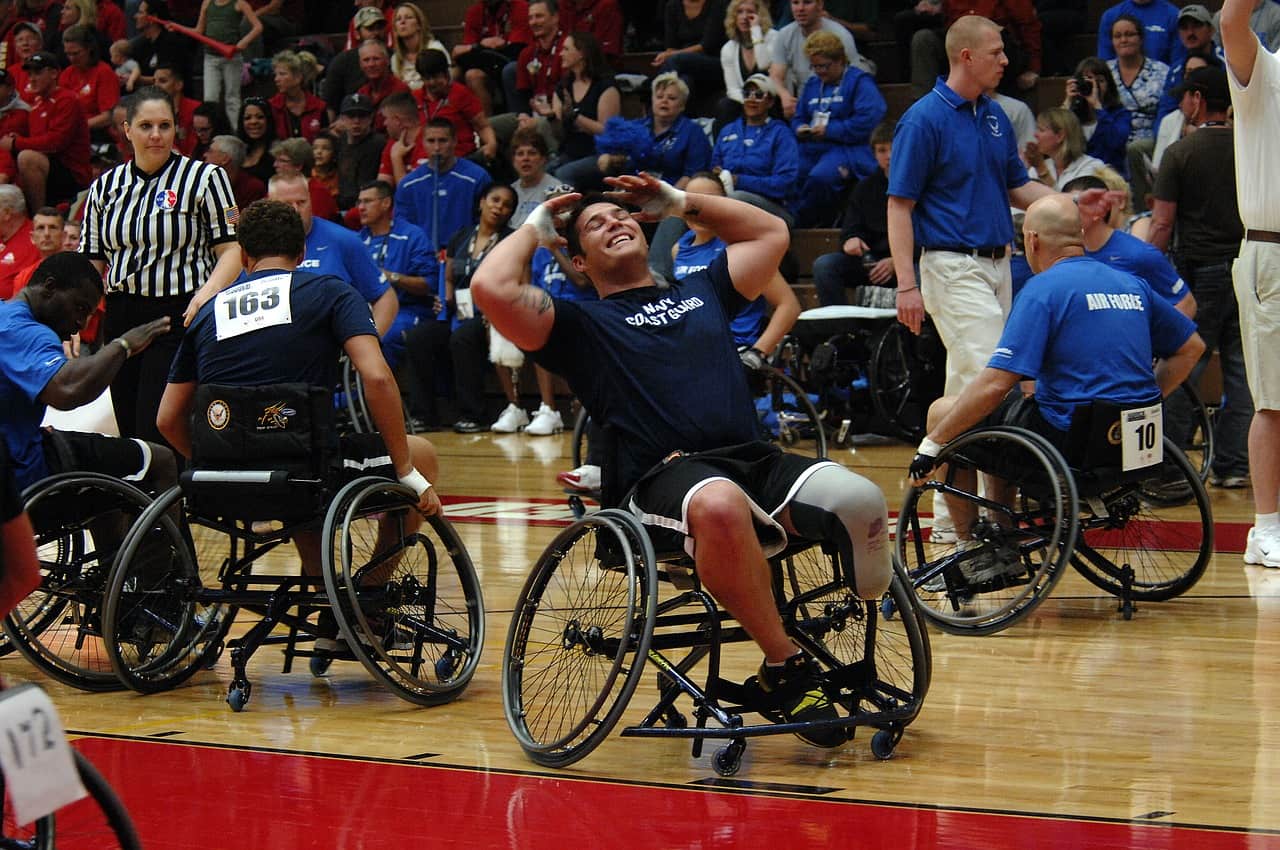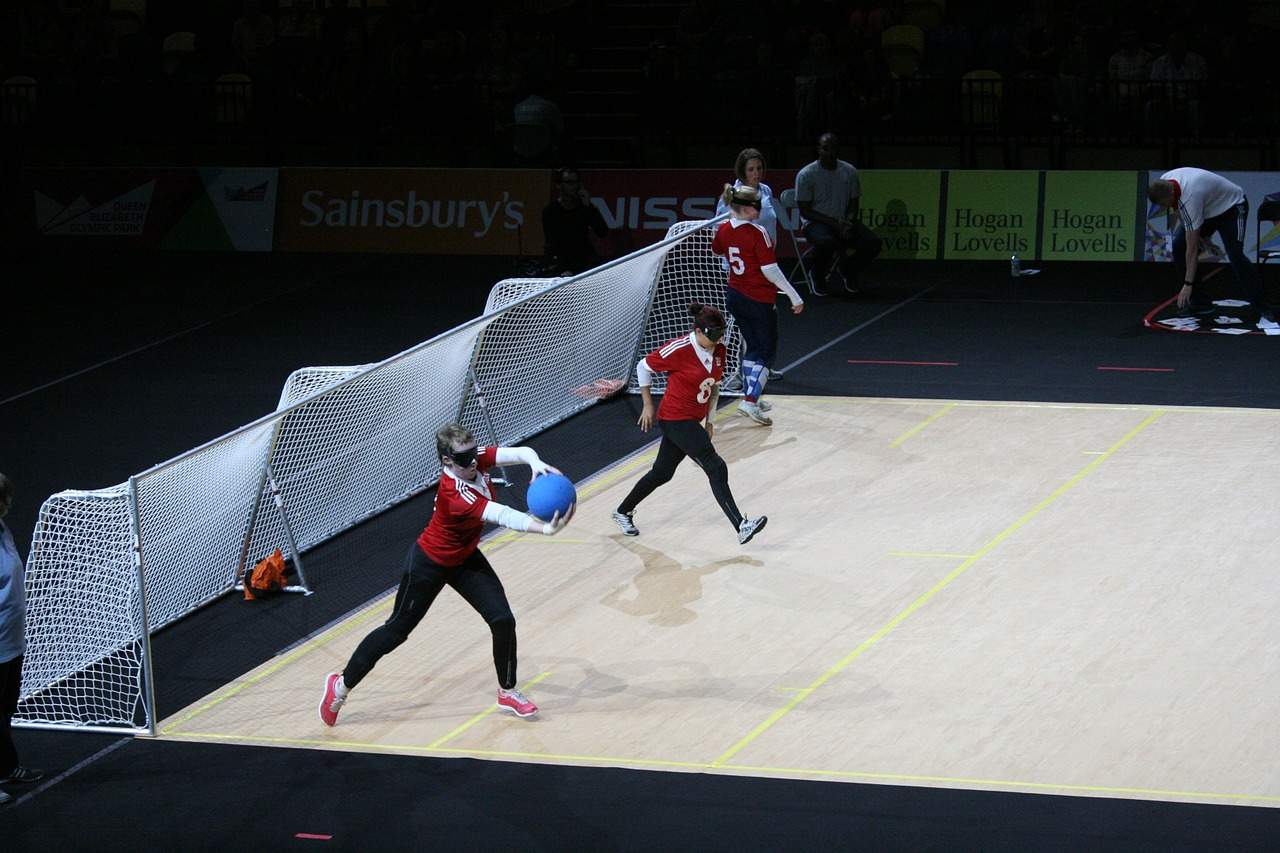
With the 2016 Rio Paralympics now in full swing, it is important to take a look at the greater picture. The Paralympic Games have come a long way since their inception, and continue to grow each and every year with the Rio Paralympics marking the largest athlete turnout to date. To all who are touched by the Paralympics, they represent far more than just a set of “games”.
A Brief History
The Olympics originated in Greece over 3,000 years ago. Revived in the late 19th century, they have become “the world’s preeminent sporting competition” that we know and love today (source).

A service dog comforts a para-athlete with a prosthetic leg
The Paralympic Games, on the other hand, have a much more recent history. The first version took place shortly after World War II, when injured servicemen and women returned to Britain. In 1948, while the Olympics kicked off in London, 16 wheelchair-bound British vets competed in an archery competition dubbed the “Stoke Mandeville Games”, aptly named for the Stoke Mandeville Hospital where they were being treated (source).
It wasn’t until 1960 that the competition was first recognized and deemed “The Paralympic Games.” The word “Paralympic” itself derives from Greek, with “para” meaning “beside” or “alongside”, signifying that the Paralympics occur side-by-side with the Olympic Games. However, it wasn’t until the 1988 summer games in Seoul, Korea that the Paralympics actually began to occur in the same cities and venues as the Olympics, a great stride in bringing the games to the masses (source).
The Importance of the “Games”
The Paralympics include athletes with a variety of disabilities, arranged into ten broad categories. Eight of these categories represent various physical impairments, while the remaining two represent visual and cognitive conditions. Athletes are ranked and grouped based on their “disabilities” to help ensure a level playing field for the various competitions.

Para-athletes compete in Wheelchair Basketball
The Paralympic Games are not simply “games”, though. To those that participate as well as to those who watch, they are both fierce competition and a statement on inclusion.
When the Paralympics take place, individuals with “disabilities” are put on display and given a chance to shine. Competitors with prosthetics do not feel ashamed of their artificial limbs or hide them under their clothing, but rather flaunt them with pride while setting world records. Para-athletes in wheelchairs playing sports such as Wheelchair Basketball proves that their wheelchairs are not hindrances, but rather powerful extensions of their own bodies that allow them to do great things. Blind athletes in Goalball successfully defend their goals against a ball that they cannot see, only hear. If you think volleyball is hard, try playing it while sitting on the floor and without using your legs, and you’ll have a whole new appreciation for the level of athleticism in these para-athletes.

Visually Impaired Competitors playing Goalball – note that they all wear dark shades to ensure that none can see and the game is fair
There is no pity. There is no shame. There is only the culmination of years’ worth of practice and training in an impressive display of skill. While discrimination is still unfortunately alive and real, these “games” have a massive and positive influence on all of those who view them.
For the veteran who is a recent amputee, the games represent that the amputation is the start of something great, not the end. For the young child born with Muscular Dystrophy, the games represent hope that she, too, can become a renowned athlete. For anybody who feels “different”, the games celebrate the beauty in these differences.
And for everybody watching, they games prove that those with disabilities are not defined by the physical. People in wheelchairs are not helpless, and they don’t need your pity. Those with intellectual impairments are highly capable individuals who can accomplish great things, and are most certainly employable. Most importantly, all people are human and should be treated as such.
Paralympians are not disabled – they are the super-humans.


